Will Rabinovich
These days the full frame mirrorless camera lines from the major manufacturers all have “normal” resolution models with between 20-33 megapixels (Canon R6, Nikon Z6II, Sony A7 IV) and high resolution models with between 45-60 megapixels (Canon R5, Nikon Z7II and Sony A7r4). A reasonable question to ask is whether these high resolution models offer anything besides bragging rights. I mean, who needs 60 megapixel images anyway?
Well as the owner of one of the behemoths (the Sony A7r4), I thought I’d take a crack at the answer. I believe that you need to think in terms of two kinds of resolution: Display Pixels and Processing Pixels.
The number of Display Pixels that you need depends on how you share your work. For example, if you only use your work for camera club competitions, the answer is easy. You’re limited in the long dimension to 1920 pixels. So for a 2:3 aspect ratio, the number of display pixels that you need is 1920×1280=2.4 megapixels. So your cellphone camera is overkill, but if you have an old Nikon D1, it would be just about right.
If you regularly use a 4K display, then you need 3840×2160=8.3 megapixels. So your cellphone is probably still okay, or you might want to dig out a Canon 1DS.
If you can afford a $4000 31” 8K display, you get up to 7680 x 4320=32 megapixels. So its only when you get to a very large, expensive, display that you might actually need all the megapixels in the normal resolution mirrorless cameras. And it’s not an accident that the 8K display is really big. It has a resolution of 280 pixels per inch, which is about the limit of normal eyesight. So the only reason, you’d need more megapixels for displays would be if they were bigger than 31”.
But what if you print? Well the same sort of arguments about size and resolution apply. While some print at 300 pixels per inch, 240 pixels per inch is generally considered to be a pretty good resolution. So the number of Display Pixels you’ll need depends on how big you might print. If your biggest print size is 10”x15”, you need 8.6 megapixels. At 16”x20”, you need 18.4 megapixels, in the range of normal resolution full frame cameras. If you go to 20”x30” , you need 34.5 megapixels. Here at last you venture into the range of the high megapixel cameras.
The biggest I ever print is 16×20, so why do I have a 60 megapixel camera? That’s where Processing Pixels come in. Basically these are the number of pixels you have to capture in your camera so that, after post-processing, the pixels you have left are at least as many as the number of Display Pixels you need.
Why do you lose pixels in processing? There are a few possible reasons, most related to cropping:
1. More than one picture from a capture
Sometimes one capture can have more than one possible picture in it, provided you have enough pixels for the crop. As an example here is a 60 megapixel uncropped capture. The image is okay, but a little busy
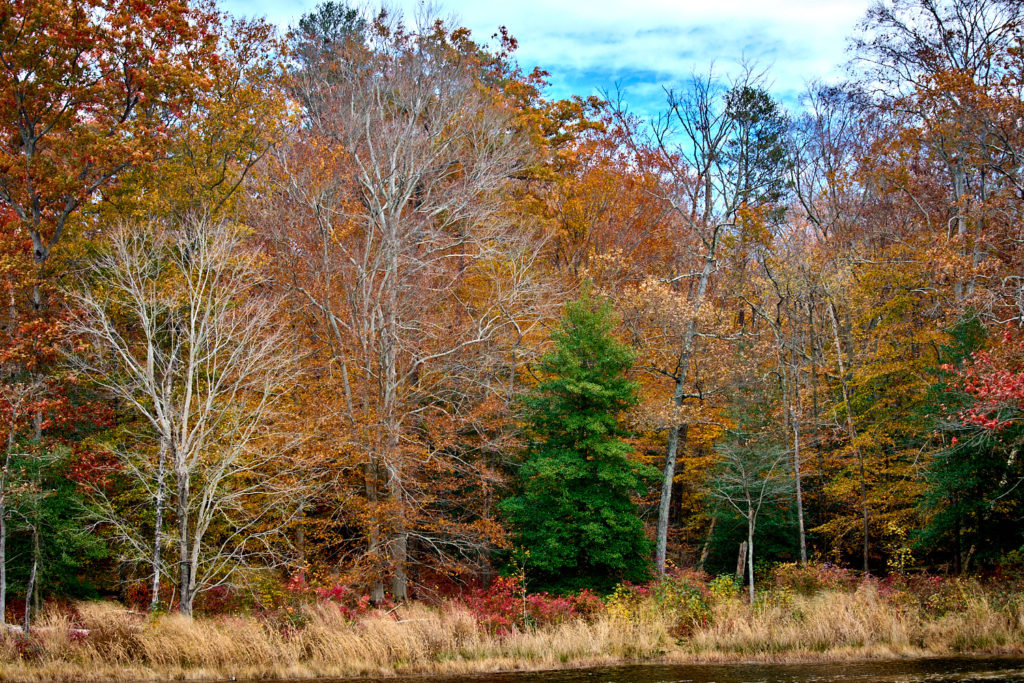
But I think better pictures are available in the original capture with some crops. The image below just focuses on the bare trees. It’s a big crop of the original, but it still has 4500×5200 pixels, or 23 megapixels. So despite having cropped away more than half the picture, I still have as many pixels left as a normal resolution full frame camera.
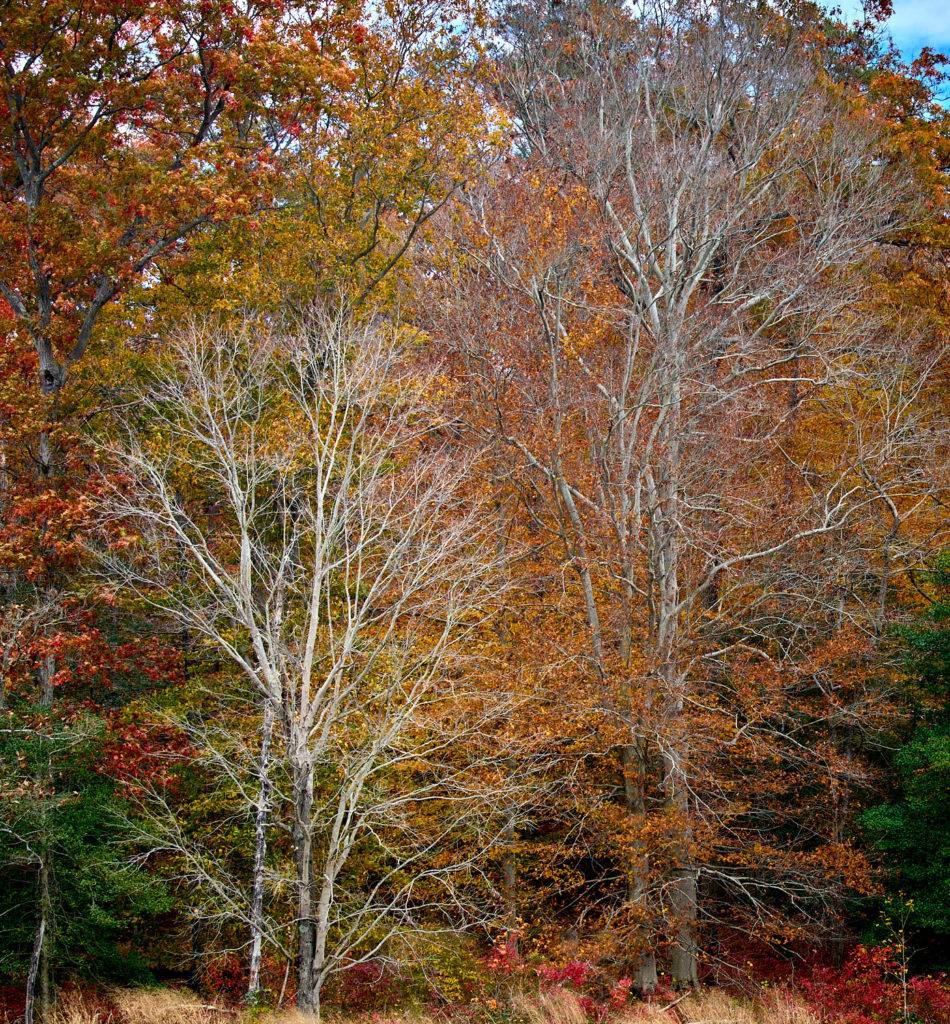
But there is another picture here as well, of just one tree, with a more aggressive crop down to 2600×4200 pixels. I now have an 11 megapixel image. I’ve cropped away more than 80% of the original capture. But there are still plenty of pixels for a Camera Club competition, or a 4K display, or 18”x11” print. If I had taken this image with a normal resolution camera, I’d have 4.5 megapixels left. Enough for some purposes, but not all.
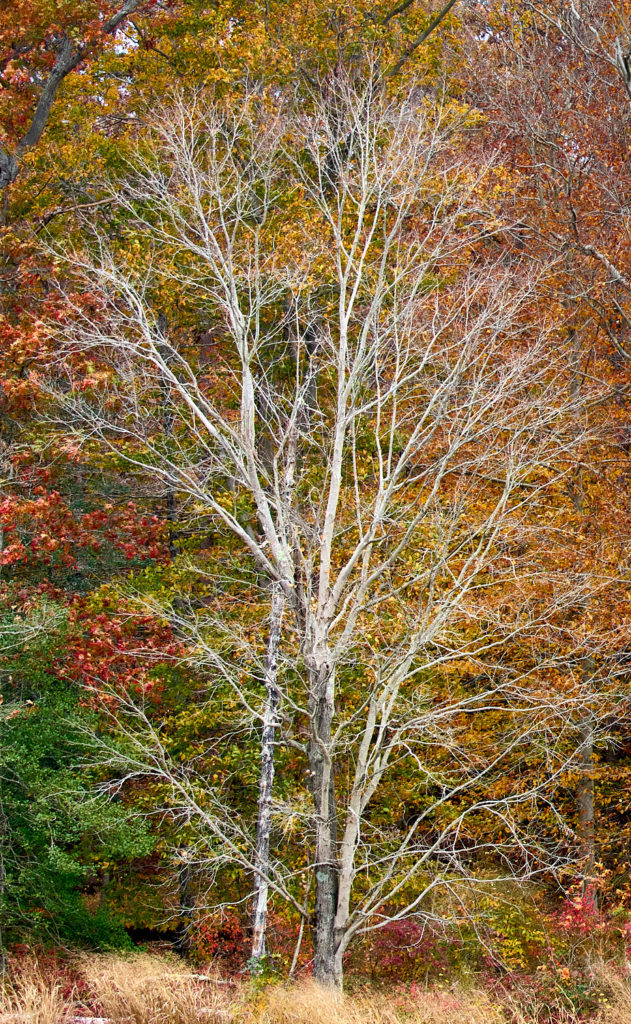
2. Extreme Cropping
Sometimes you have to go even further. I took this picture with the idea of an environmental portrait of a lotus blossom. But it really doesn’t work.

When I zoomed in on the picture in my raw processor, I realized that there was a good flower portrait here. This is an extreme crop. I’ve thrown away 90% of the 60 megapixels and ended up with a 6 megapixel image.
But 6 megapixels is plenty for a Camera Club competition, or a 4K display, or a 9×12 print. If I had started with a normal resolution camera, I’d have only 2.4 megapixels left.

3. A digital teleconverter: cropping to extend the reach of your zoom
The examples above are cases where I decided that I needed to crop after I took the picture. But you can use cropping more deliberately, when you’re out shooting. For example, sometimes your telephoto zoom is not long enough. In those cases, a teleconverter can extend your reach. But if you have enough pixels, then you have an adjustable digital teleconverter. I took this whale picture with a 70-200 zoom at 200, but the reach was less than I wanted so, while I was taking the photo, I knew I would crop.
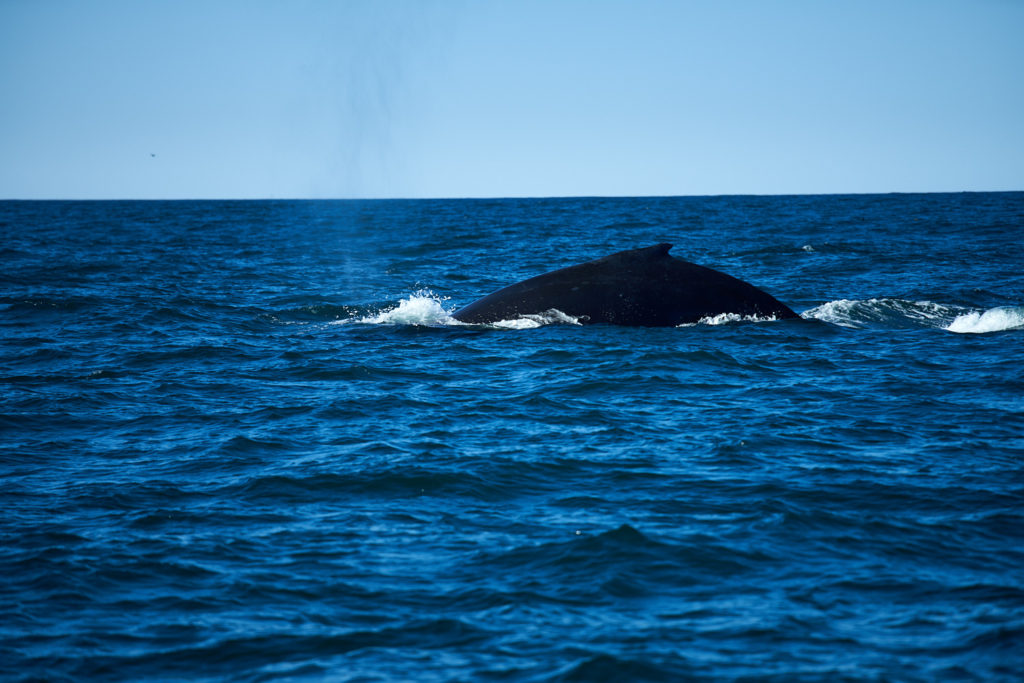
A moderate crop in post-processing gave me the equivalent of a 1.6x teleconverter. After cropping I still had 26 megapixels left; as many as in a normal resolution mirrorless camera!
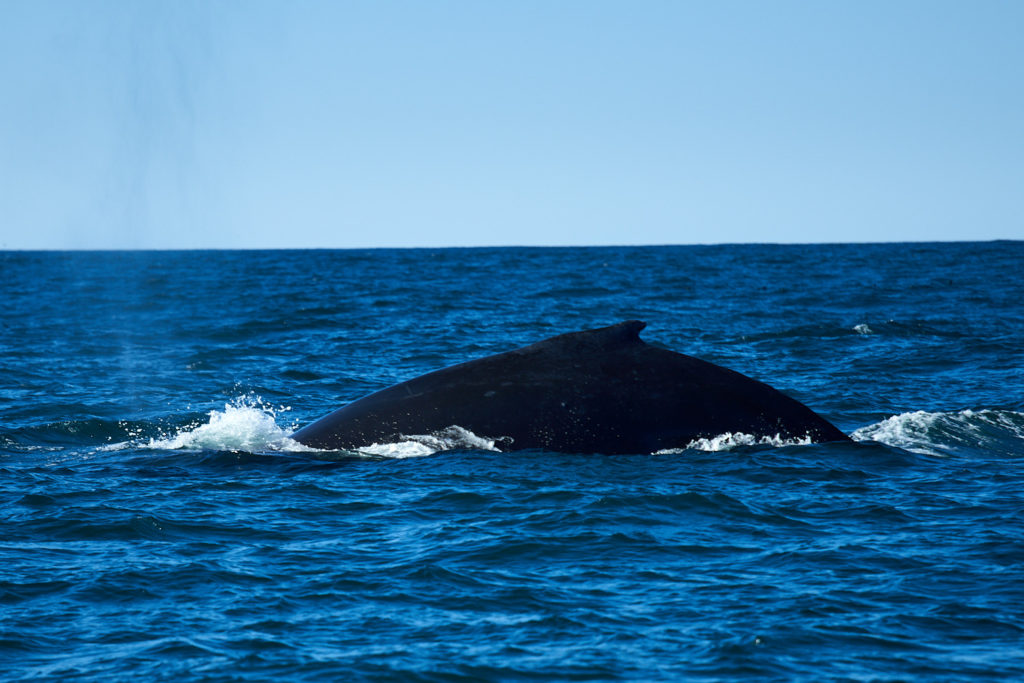
A downside of cropping can be that you don’t see the cropped image in the viewfinder. But my Sony actually has an APSC mode where it crops in the camera. This can be advantageous in taking up less space on your cards and allowing longer bursts. But there is another advantage. In these modes the viewfinder only shows the cropped image. So you can see the magnified image you get from cropping. I sometimes use this mode for composition, but then switch back to full frame mode so that I can capture all the pixels and decide on the right crop in post-processing.
4. Convert your prime lenses into “zooms”
There are a lot of reasons to use prime lenses. They are generally smaller, have better sharpness, and nicer out of focus and transition regions. They are often faster. There are many f/1.4 primes, but an f/1.4 zoom would be enormous. Generally zooms are at least two stop slower than the fastest prime lenses. But zooms have a flexibility in field of view that prime lenses don’t. However, since you can crop a high resolution camera by up to a factor of two, while still having lots of megapixels left, you can convert all your primes to 2:1 focal length ratio digital zooms. Once again, you have the disadvantage of not seeing the zoomed image in your viewfinder, but you can use the trick of going into APSC mode to see a 1.5-1.6x magnification of your image.
Here is an example of a Sony 24 mm lens at f/1.4, “zoomed” to 35 mm and then 50 mm. When you zoom in this way, you are only changing the lens’ field of view. Things like depth of field don’t change, and also you have less light gathering power because you are only using a part of your sensor. So some say that you should quote an “equivalent” f/number. This just means that when this lens is cropped to a 35 mm field of view, it doesn’t have the depth of field you’d expect from a 35 mm f/1.4 lens, it still has the depth of field of a 24mm f/1.4. It turns out that this is the same depth of field, and light gathering power, as a 35 mm f/2 lens. So the “equivalent” f/number of the 24 mm lens cropped to 35 mm is f/2.

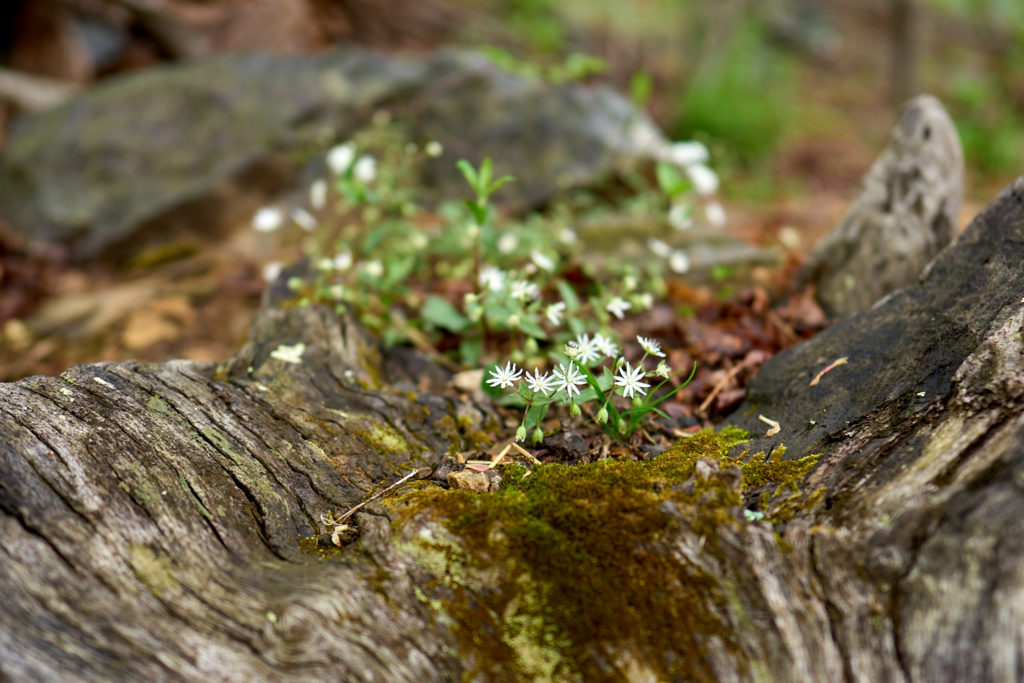
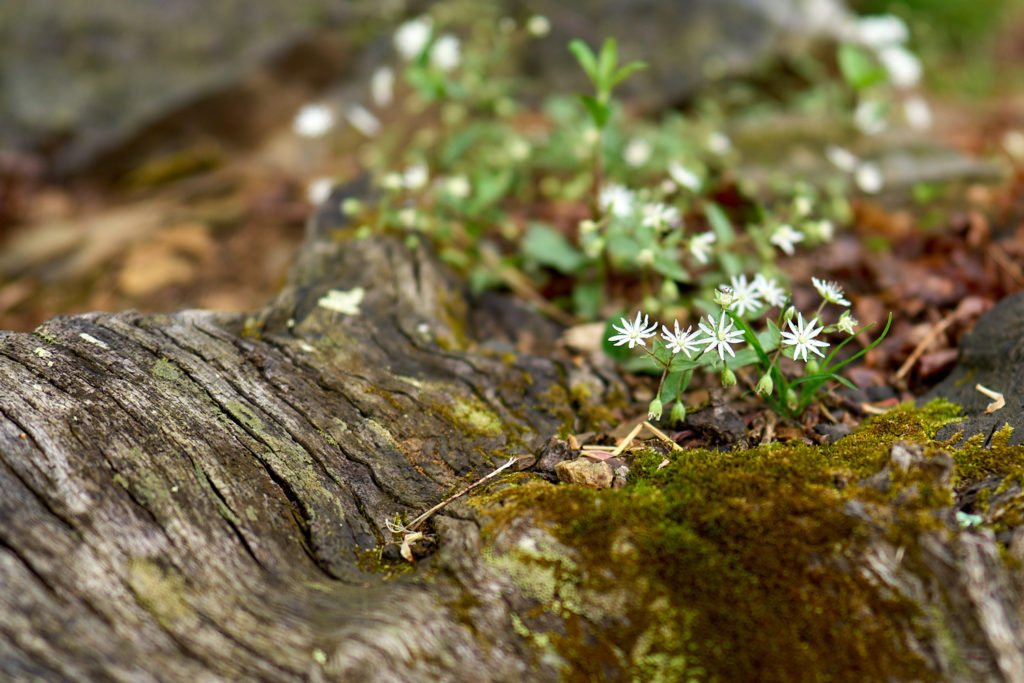
Other uses
Digital Macro:
You can use cropping of high resolution images to turn your normal lenses into macro lenses. All lenses have a close focus limit that determines their maximum magnification. But you can increase this magnification by cropping, as long as you have sufficient pixels.
Keystone Correction:
Most raw processors can correct for the keystoning effect you get when you point upward at a tall object. But you lose pixels when you do this. So you want to start our with more pixels than you need.
Noise Reduction
If you don’t need to crop your photo, but also don’t need a huge number of display pixels, you still gain an advantage in starting with lots of processing pixels. When you reduce a 60 megapixel image to, say, a 15 megapixel size print, you reduce the amount of noise in the picture. When you shrink a large image, your post-processing program is averaging pixels to produce the smaller image. This will reduce any noise. Now a high resolution sensor may start with more noise than a lower resolution, so overall you may not win. But this does mean that high and low resolution sensors will usually end up with about the same noise levels when viewed at the same output size.
Use your APSC lenses on your full frame camera
I had (and have) a Sony APSC camera before my A7riv, along with several APSC lenses. You can’t use these lenses at full frame because they vignette. But if I switch the A7riv into APSC mode, I end up with a camera that actually has more megapixels than my Sony A6500 (26 megapixels on the A7riv vs 24 on the 6500).
Conclusions
Using high resolution cameras doesn’t make sense for everyone. They are more expensive. They take more storage space both on your camera’s cards and on your computer’s hard drive, and they can end up processing slower. Also, if you don’t believe in cropping, they just have more pixels than almost anyone can use. But if you do crop, then can offer quite a lot of flexibility to do things differently.
